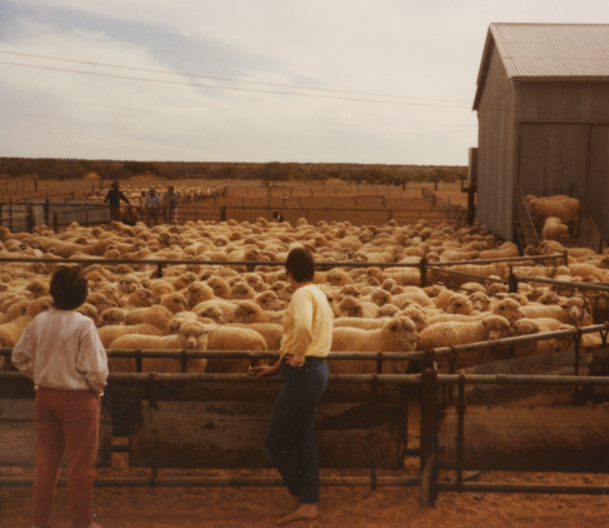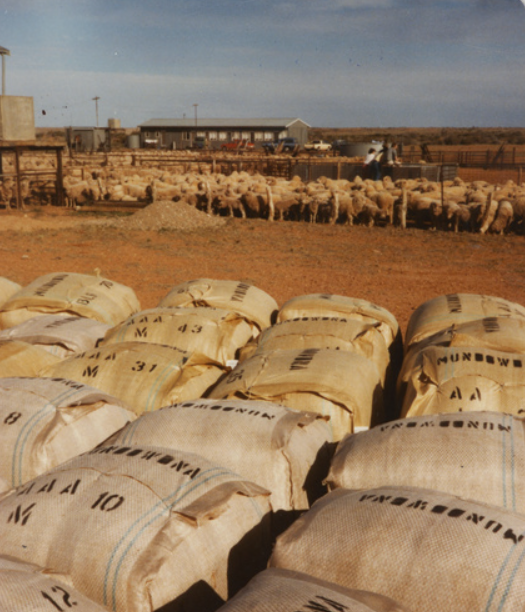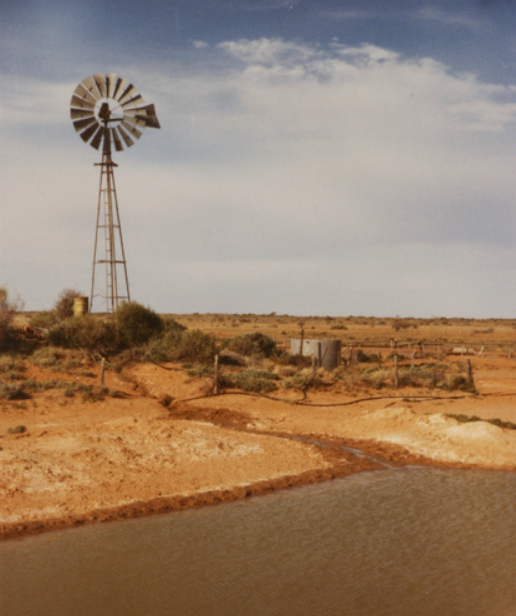 In the driest region of the driest state in the driest inhabited country in the world, a lonely young stockman was on the lookout for love in the 1870s.
In the driest region of the driest state in the driest inhabited country in the world, a lonely young stockman was on the lookout for love in the 1870s.
Readers of a South Australian newspaper in the 1870s opened the page to find an impassioned plea from a young man on the hunt for a wife. The 25-year-old described himself as ‘in a good position and considered good looking’. Those ‘matrimonially inclined’ were encouraged to apply. And where would their search for love take them? Mundowdna Station.
These days life on the sheep and cattle station in South Australia’s desert landscape is a lot less lonesome. Mundowdna has been owned by the Litchfield family for more than 70 years. Along with neighbouring stations Mount Lyndhurst and Wipoorinna, three generations now call the land south of Marree home.
 In the driest region of the driest state in the driest inhabited country in the world, Mundowdna is named after the Aborginal word for waterhole. E. Chapman established the Mundowdna run in 1860, before it was soon taken over by the Matthews brothers. Curious to explore the country gripped by drought in the far north of the colony, South Australian Governor Sir Richard MacDonnell set out to explore the region. After many weeks on the track, he reported mainly locusts.
In the driest region of the driest state in the driest inhabited country in the world, Mundowdna is named after the Aborginal word for waterhole. E. Chapman established the Mundowdna run in 1860, before it was soon taken over by the Matthews brothers. Curious to explore the country gripped by drought in the far north of the colony, South Australian Governor Sir Richard MacDonnell set out to explore the region. After many weeks on the track, he reported mainly locusts.
 The property has a tumultuous history. In 1863 the Matthew brothers reported local Indigenous people were killing their stock. Five years later the Blinman Police answered the phone to news of two deaths at the station and the property up in flames. The now lessees, Debney and Woodford, told the police that ‘an affray has taken place this evening between a party of natives and ourselves, which has terminated fatally, two of whom are lying here uninterred'. When the police attended, they found nothing out of the ordinary, or the two bodies. Many twists and turns evolved until finally, months later, the grave with the two bodies was discovered.
The property has a tumultuous history. In 1863 the Matthew brothers reported local Indigenous people were killing their stock. Five years later the Blinman Police answered the phone to news of two deaths at the station and the property up in flames. The now lessees, Debney and Woodford, told the police that ‘an affray has taken place this evening between a party of natives and ourselves, which has terminated fatally, two of whom are lying here uninterred'. When the police attended, they found nothing out of the ordinary, or the two bodies. Many twists and turns evolved until finally, months later, the grave with the two bodies was discovered.
Mundowdna has changed hands many times over the years, with Sidney Kidman adding it to his portfolio in 1906. Just two years later he sent the cattle north by rail to find feed and water as drought. Almost 20 years later when there was no money left in horse-breeding, more than 2000 horses were destroyed in seven months.
 But today, with five good rainfall years under its belt, there’s plenty of life ahead at Mundowdna Station. The station has made the switch from Merinos to Dorpers, and Australian White genetics have also been introduced with the aim to breed a more robust sheep with a better resistance to wild dogs. On the cattle front, Senepol, Angus and Murray Grey have also been new additions to a traditionally Shorthorn and Santa Gertrudis herd. Across the three stations, the Litchfields run 2000 breeding cows and 5500 breeding ewes, with the aim to double those figures in the coming years.
But today, with five good rainfall years under its belt, there’s plenty of life ahead at Mundowdna Station. The station has made the switch from Merinos to Dorpers, and Australian White genetics have also been introduced with the aim to breed a more robust sheep with a better resistance to wild dogs. On the cattle front, Senepol, Angus and Murray Grey have also been new additions to a traditionally Shorthorn and Santa Gertrudis herd. Across the three stations, the Litchfields run 2000 breeding cows and 5500 breeding ewes, with the aim to double those figures in the coming years.
All four Litchfield brothers still work the land they grew up on today. Their children work right along beside them and young grandchildren eagerly await their turn. With neighbouring stations now part of Lyndhurst Pastoral Company, Mundowdna’s future is in the good hands of a family pastoral empire flourishing in the South Australian desert.
 Results
Results
